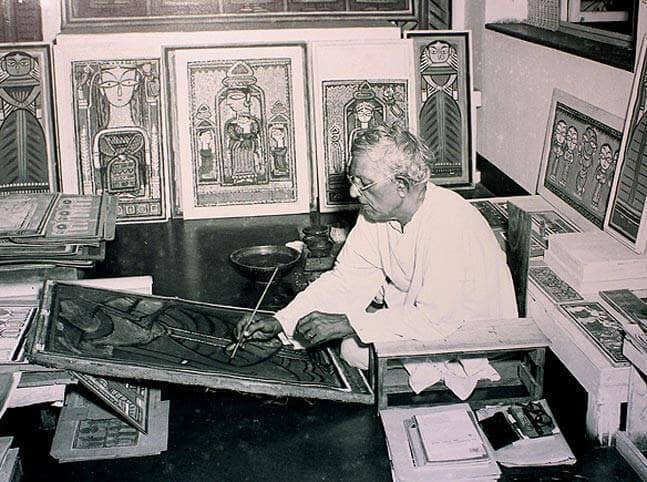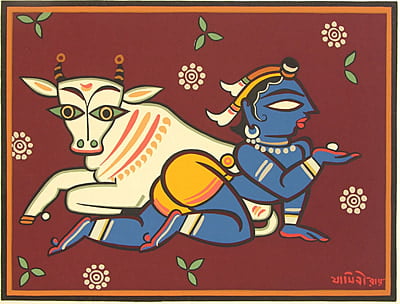
Jamini Roy
Jamini Roy, born in a small village in Beliatore, West Bengal, in 1887, was a visionary artist who revolutionised the landscape of Indian modern art. His journey from academic realism to a unique blend of folk and tribal art styles is a testament to his creative spirit and dedication to his craft. Roy's early training in European academic-realist painting at the Government College of Arts and Crafts, Kolkata, laid a strong foundation for his artistic skills. However, his true artistic identity emerged as he began experimenting with various styles, drawing inspiration from the rich cultural heritage of Bengal.
One of Roy's most significant contributions was his exploration of indigenous materials like woven mats, cloth, and wood coated with lime. These unconventional choices allowed him to achieve a textured, mosaic-like effect that was reminiscent of Byzantine art. His restrained and precise lines added to the unique aesthetic of his works. Roy's fascination with the Santhals, a tribal people living in the rural districts of Bengal, led him to capture the essence of their folk art and incorporate it into his own style. By fusing the minimal brush strokes of the Kalighat style with elements of tribal art, he created a truly original and distinctive artistic language. Beyond the stylistic innovations, Roy's rejection of the prevailing modern art trends and his embrace of Bengali folk paintings marked a new chapter in the history of Indian art. His depictions of the mother and child, Radha, and the figure of Christ were characterized by simple two-dimensional forms, flat color application, and a focus on lines. The decorative borders and motifs further enhanced the visual appeal of his works. Roy's legacy is evident in the numerous exhibitions featuring his works and the collections that house his art around the world. His contributions were recognized with prestigious awards like the Viceroy's Gold Medal and the Padma Bhushan. Although he passed away in 1972, his influence on Indian art continues to inspire and captivate audiences today.
His masterpieces are reproduced on limited edition silk screen










